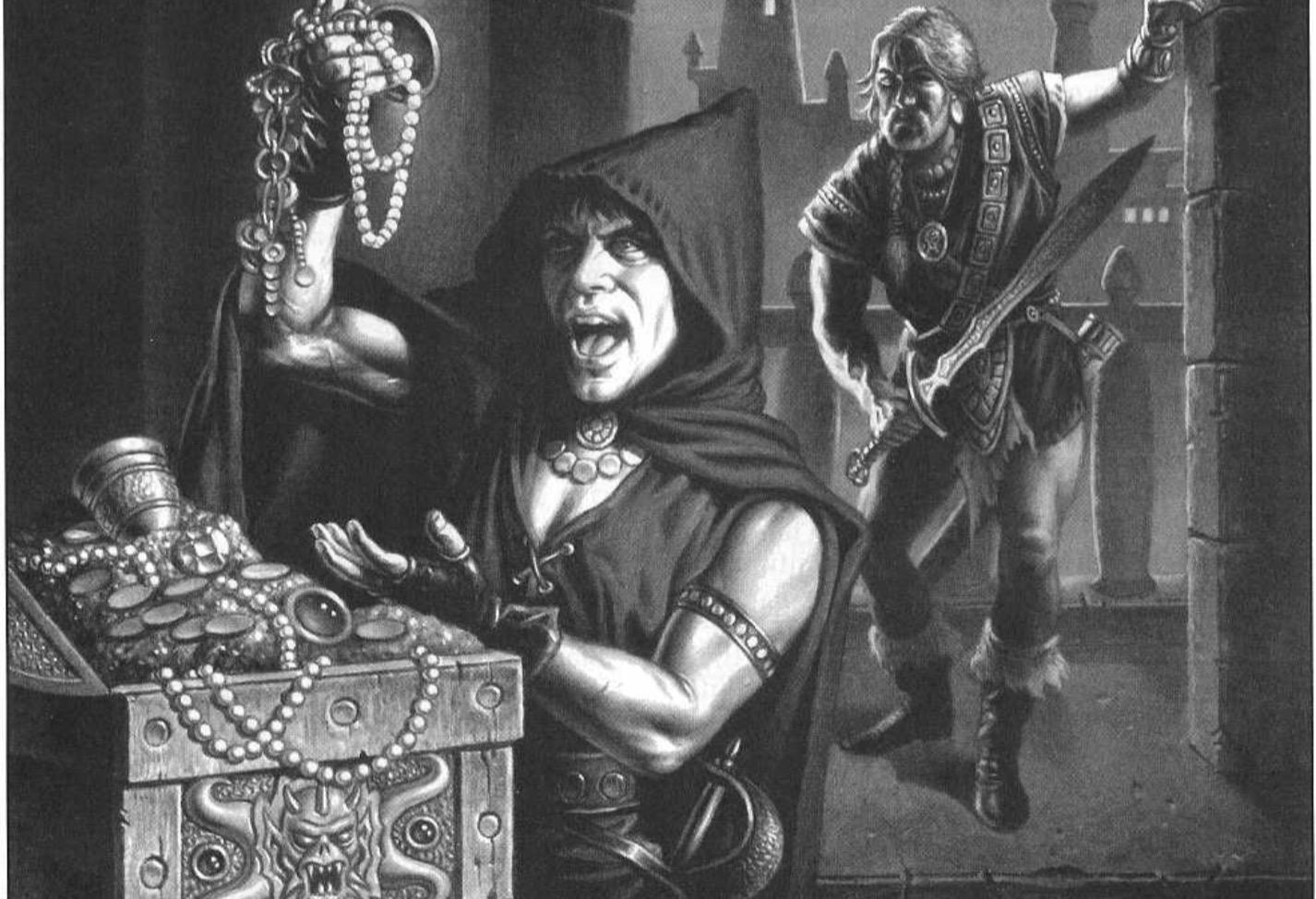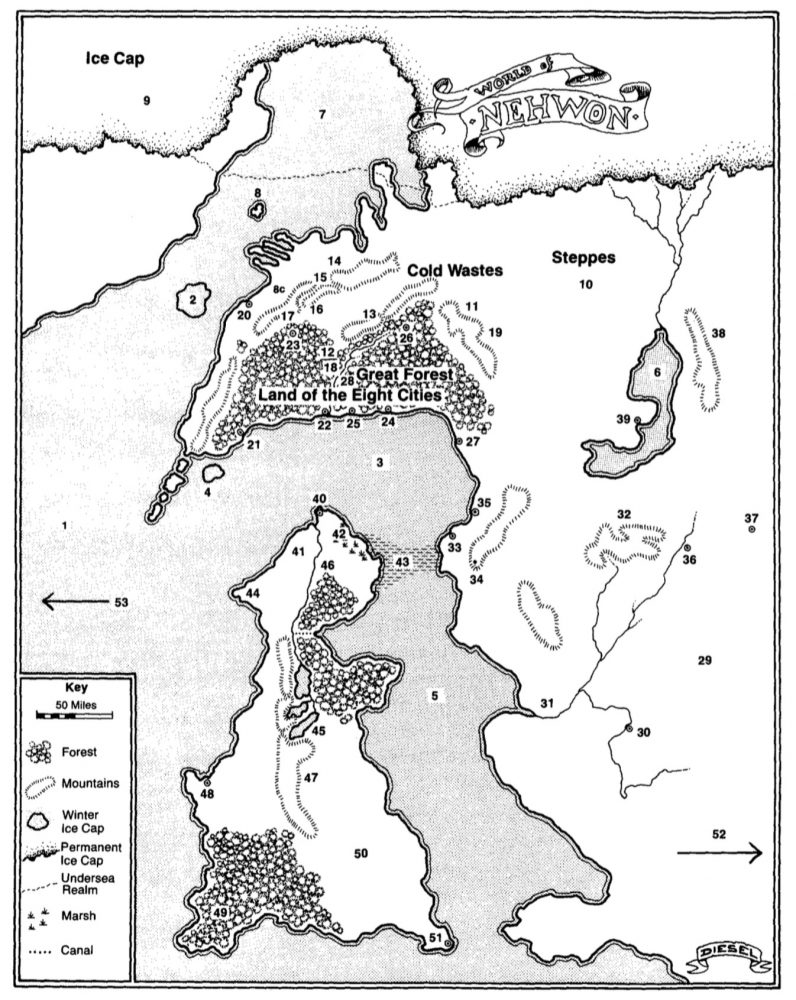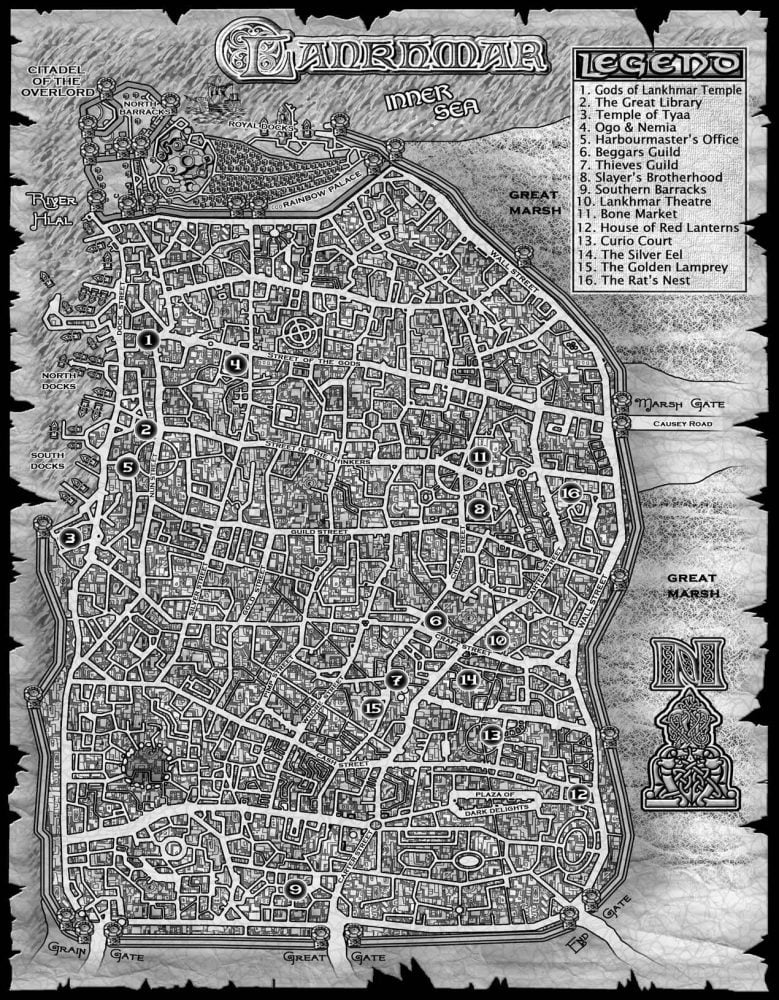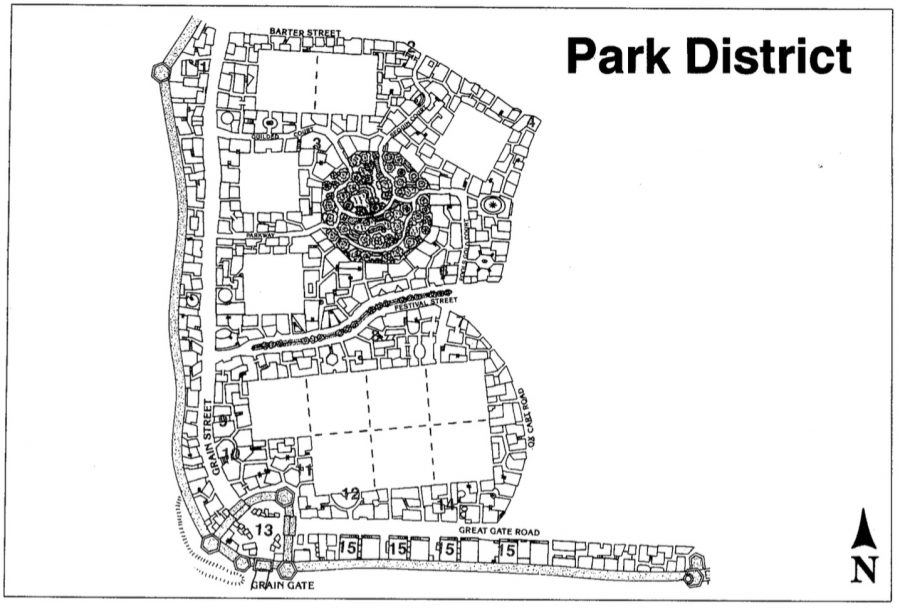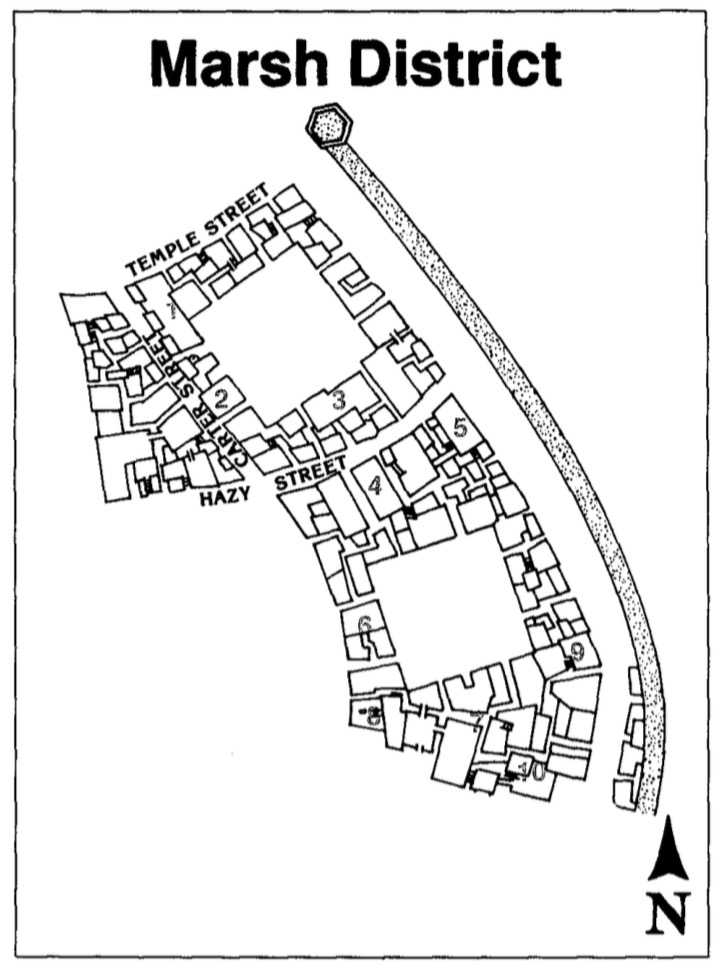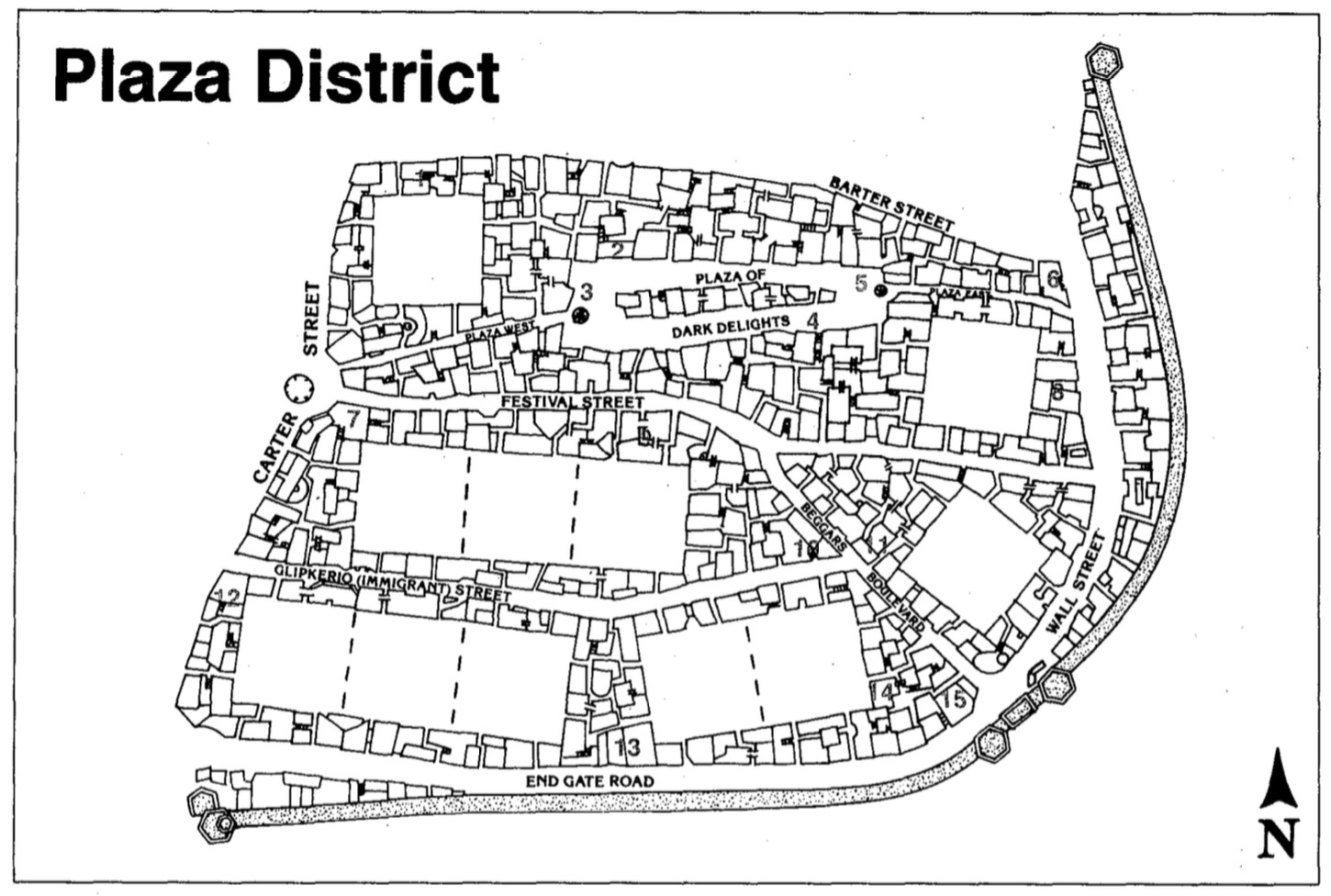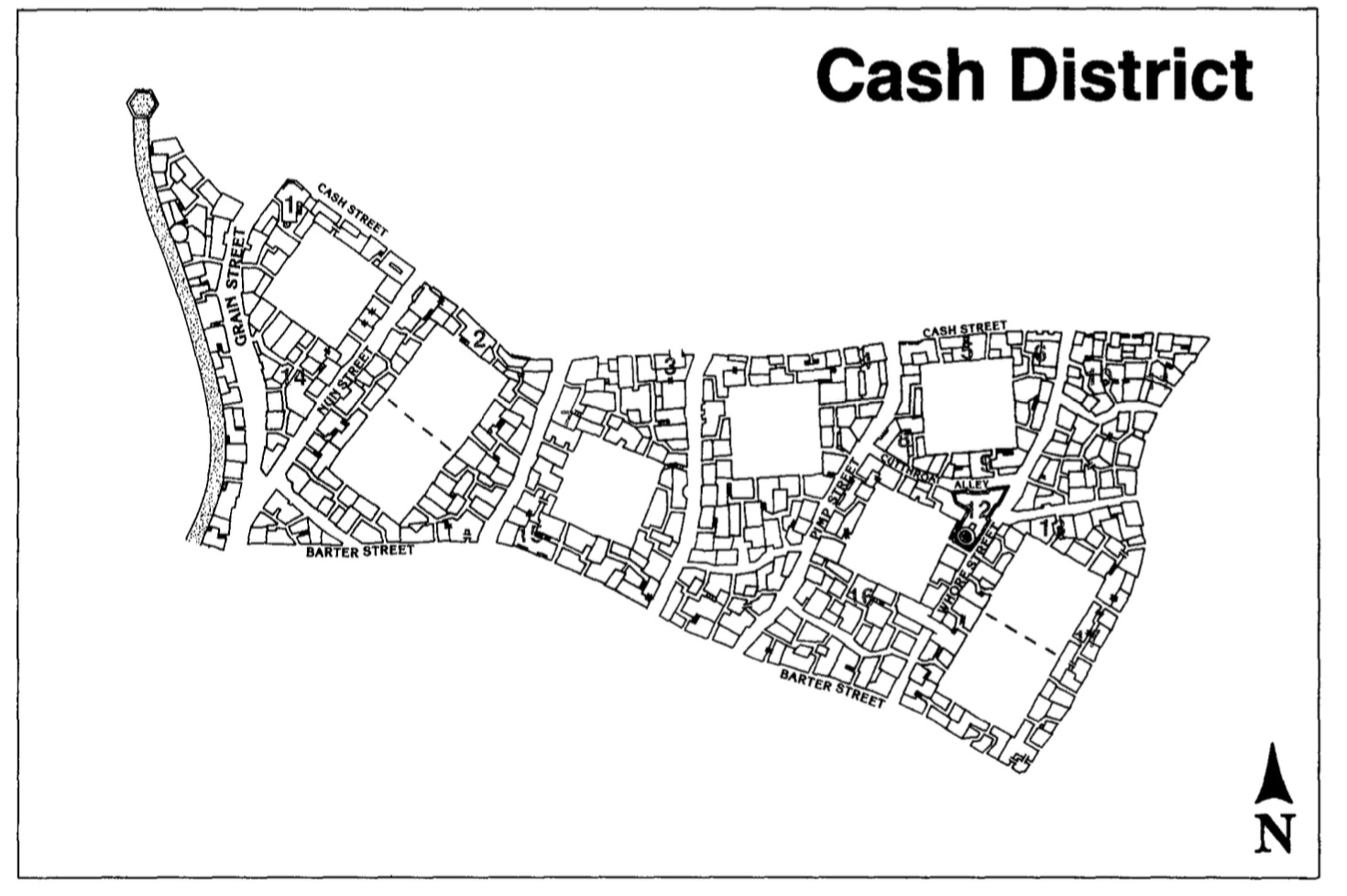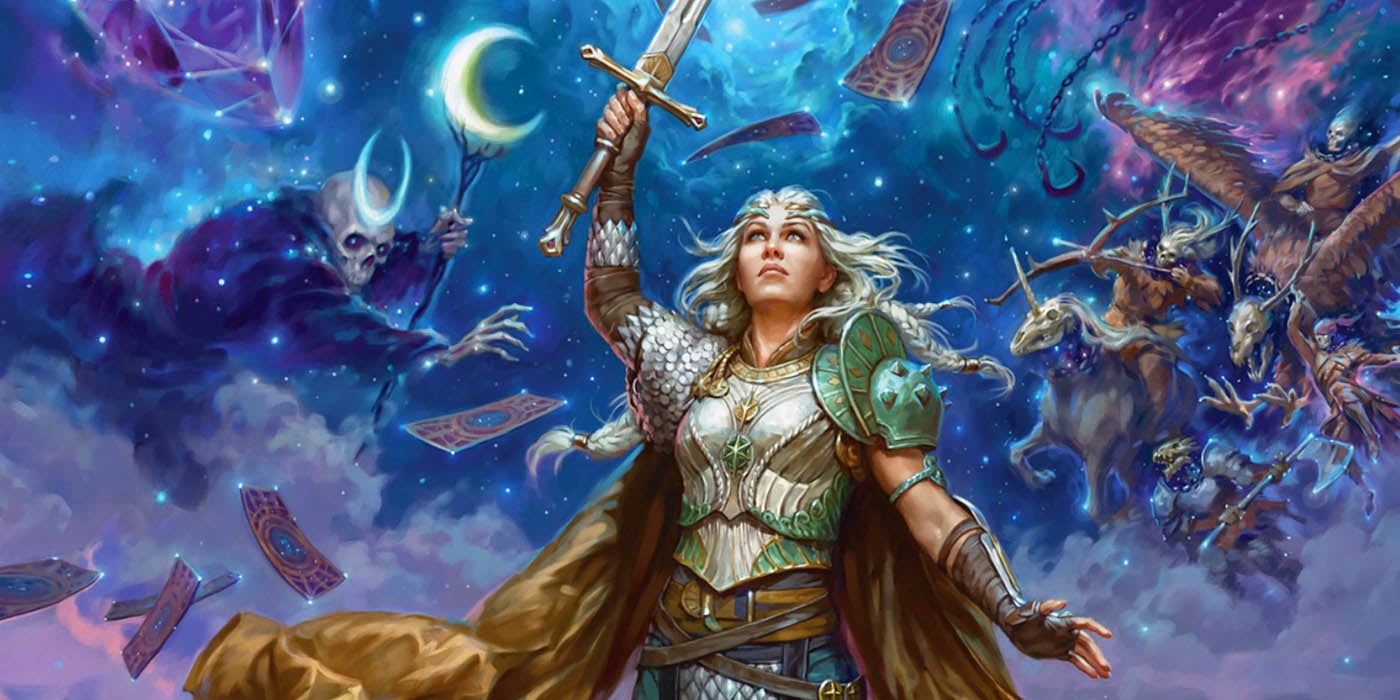D&D: An Adventurer’s Guide to Lankhmar, City Of Adventure


Take a look back at one of the biggest and most colorful cities in D&D–if you’re hungry for urban adventures, check out Lankhmar, City of Adventure.
Every hero has to come from somewhere. And nestled deep in the realm of Nehwon, you’ll find one of the greatest cities. You can tell it’s great because pickpockets are waiting to take your gold, full of districts, plots, schemes, and brawls, this is one of the most influential settings in D&D, but not for the reason that you’re thinking.
It’s safe to say that even if you’ve never read a single one of Fritz Leiber’s Fafhrd and the Gray Mouser stories, you’ve still been influenced by them. Which, side-note, if you haven’t, you should give at least the first collection a shot–going through and reading them after playing D&D is fascinating. It’s a lot like going back and watching Robin Hood: Prince of Thieves but only after having seen Robin Hood: Men in Tights. You start to see the historic roots and all the little callouts the game makes.
Whether it’s the idea of “an adventurer” — Fafhrd and the Gray Mouser were often for hire, and not picky about who hired them. In fact were patronized by a pair of arcanists: Ningauble of the Seven [usually six] Eyes and Sheelba of the Eyeless Face–between them both you got a slightly normal than average number of eyes, but still within acceptable parameters. But so much of what we think of as a D&D Character comes from this pair: Fafhrd, a tall Barbarian who is skilled with a sword or with a song, and the Gray Mouser, a nimble thief who knows both swordplay and magic. Their friendship is legendary. Consider them the original murder-hobos, if you like.
And the city they call home is just as much a character as the two: thoroughly corrupt, this seaside town is home to brigands and bandits dressed up in societal shrouds. Lankhmar is ostensibly ruled by an Overlord and accompanying nobility, but there’s also a powerful Thieves’ Guild (of which our (anti?)heroes are members), an undercity of magical, sentient rats, and evocative names that invite further exploration: Cheap Street, Bone Alley (or the intersections of Murder and Death Alley).
If you’ve ever had an urban adventure in D&D, it is thanks in large part to Lankhmar (which also gives Ankh-Morpork more than a little life as well). So mind your purse strings AND the smell, and let’s dive in.
Nehwon
Set in the world of Nehwon (or Nowhen for anyone who doesn’t compulsively spell weird names backwards to see if they’re a clue)* Lankhmar is, as we’ve mentioned, a seaside city (40)–here shown on the northernmost tip of the central island continent, which is also called Lankhmar, so named for its largest and most celebrated city.
Most of the world of Nehwon is underwater. The seas are vast and have swallowed up much of the land, leaving scarce enough of the world to explore. And while characters might dive below the waters with the aid of magic, they’d only run into the Sea King, who is as capricious as he is powerful, so long-term visits are ill-advised.
Exploring the surface of Nehwon you’ll find a wide variety of continents that seem like they’re waiting for adventurers to go plunder their treasures (which, given that the world existed for Fafhrd and the Gray Mouser to have adventures in, makes sense), whether it’s lost and arcane Simorgya, which sank, Atlantis-like beneath the waves, leaving only jealous survivors preoccupied with their supposed former glory, the imposing peaks of Stardock (a massive mountain that is rumored to be home to a number of invisible creatures with strange magical abilities [or five wizards with a sense of humor]), or the city of Ool Hrusp (one of the Eight Great Cities, now ruled by a mad tyrant who delights in all manner of gladiatorial combat), you’ll find something to adventure towards in the world.
Lankhmar
But nowhere is finer than Lankhmar, the City of the Black Toga (don’t ask). Take a look:
Oh man, there’s a lot going on here. Taking the view from above, you can see how it’s chock full of thoroughfares and all manner of blind alleys, dead-ends, and crowded regions. Let’s just get an idea of some by going through district by district. First up is the Park District:
So-named for the infamous Park of Pleasure–an overgrown, unkempt locale that serves as a center for assignation and illegal activities. It enjoys a reputation as “neutral ground” for underworld meetings, while somehow still enjoying its namesake reputation as being a perfect meeting place for lovers, both illicit and otherwise.
The Park district draws so much illicit attention because it is otherwise home to all of the guildhouses in town, including the Jeweler’s Guild, the Carpenter’s guild, the Tailor’s guild with its illustrious history and rituals, the Wainwrights and the granaries–if it helps make the city go, it’s here. Which means so are the thieves.
Festival District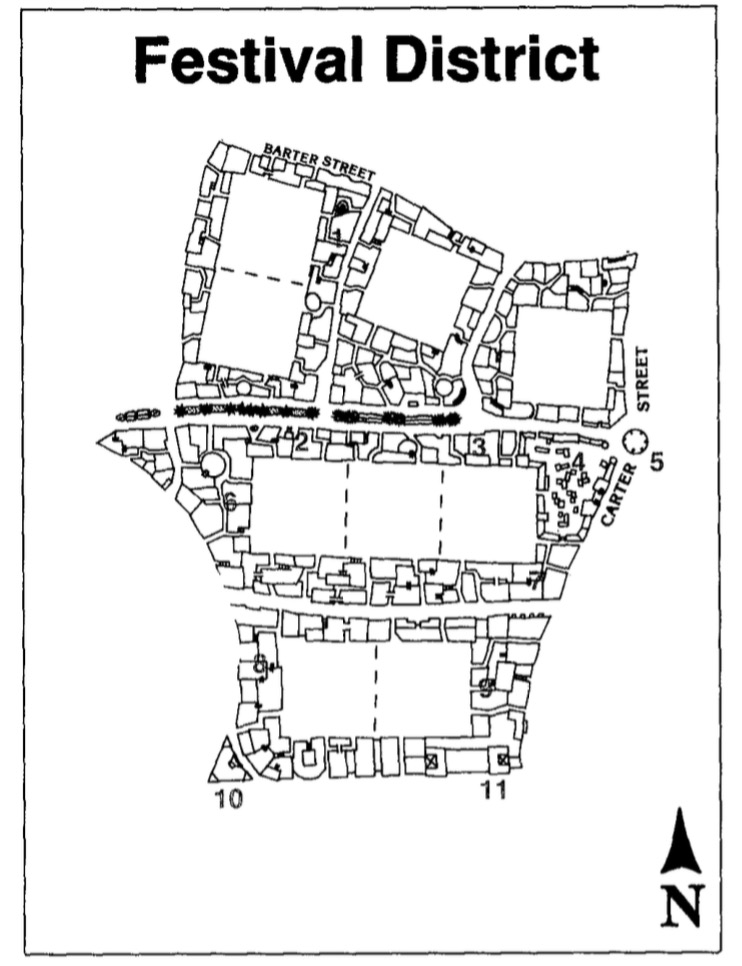
Aha, now we’re talking. A whole district dedicated to Festivals, and unlike some of the other districts where they try and hide the fact that there’s all kinds of illegal activity under a fancy name, the Festival District is exactly what it says on the tin. You can always find a celebration of some type going on in this district. Usually brightly lit and well-decorated with trees, the Festival District is home to flowering shrubs, statuary, and other key ‘chase scene’ elements you’d want.
Other notable places in this district include Yun’s Bakery, an establishment known for their excellent baked goods and generosity (unknown, however for the fact that its proprietors are followers of the Rat God and are agents of the rats of Lankhmar Below, who may one day rise to see the city fall), the Jolly Otter, an inn that is home to travellers and with a patient, adaptable staff who is used to changing to accommodate the day’s festival.
Marsh District
Next up is the Marsh District, the smallest, poorest district in Lankhmar. Here, everything is in disrepair. A fantasy version of the slums, the Marsh District’s buildings are in varying states of disrepair, some often have huge holes in the walls or are missing parts of their roofs. The smell of rotting vegetation fills the air, except for when a Night Smog rolls in, then there’s a temporary, choking reprieve from the scent of rotten cauliflower.
Because it is so poor, the Guardsmen of Lankhmar prefer to stay away, letting the various gangs sort themselves out. And for the most part, they do. Anyone is a potential enemy (or ally) in the Marsh District. Necessity may be the mother of invention, but it also makes for the strangest bedfellows.
Plaza District
Home to the Plaza of Dark Delights, the Plaza District is home to its namesake market, as well as many minor guildhalls, shrines, hedge wizards, thieves, and a very rich, corrupt Magistrate, the Plaza district is downright cosmopolitan, for Lankhmar. By day, the districts namesake market place is a normal human plaza during the day–though it is rumored to be the largest of Lankhmar’s markets.
But at night, the Plaza of Dark Delights lives up to its names. New vendors take over the stalls, and a muted red light illuminates the faces of masked and veiled patrons who saunter through the marketplace, making illicit purchases and seeking out privacy as needed. The nocturnal version of the Plaza features any and every form of drink or intoxicant, along with strange, but powerful potions, fine powders, enchanted items–the Plaza boasts of being able to find something for everyone, no matter how obscure or…er…particular…their tastes.
Everyone in this district walks the line…
Good ol’ Lankhmarian naming conventions at work here–the Cash district is the financial district. Here are banks, moneylenders (when not being visited by three spirits), moneychangers, fences, loan sharks, pawnshops. Basically if coins are involved, odds are good that you’ll be dealing with someone in the Cash district.
Notable landmarks include the Moneylenders’ Guild House–an opulent, four-story building that is protected by elaborate locks, traps, beasts, and armed guards which are all there to provide unnecessarily high security to the rather meager contents of the building’s vaults–the guild’s dues and that’s it. Here is also the safest place for the guardsmen, , who in this district have little enough to do besides enjoy the rich scenery and clean up after the occasional scheme gone wrong.
Phew, we’re barely through the first few districts and we’re already running a little long. So, for now, we’ll call it here. Check back next week for Part 2 of Lankhmar the City of Adventure. We’ll delve a little deeper into the districts and talk a little more about some of the Fafhrd and Gray Mouser stories that helped inspire Dungeons and Dragons.
Learn more about Lankhmar
In the meantime, just wonder–what might be kept in the Tenderloin district?
*Look I just didn’t want to get suckered by Dracula, that’s all, yeah I’m looking at you Alucard.

